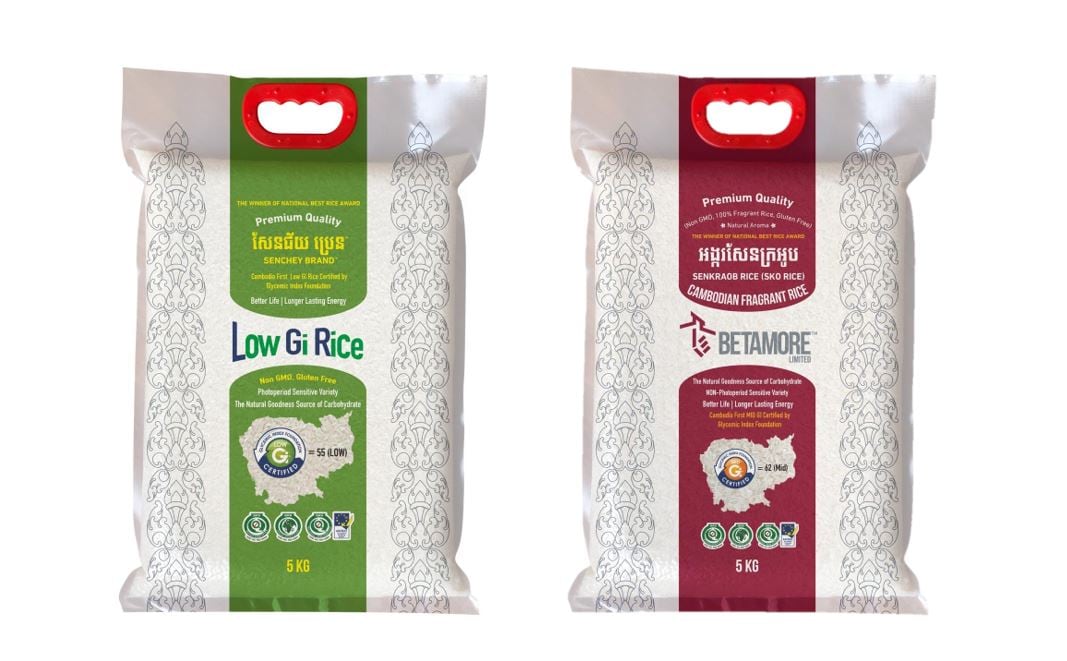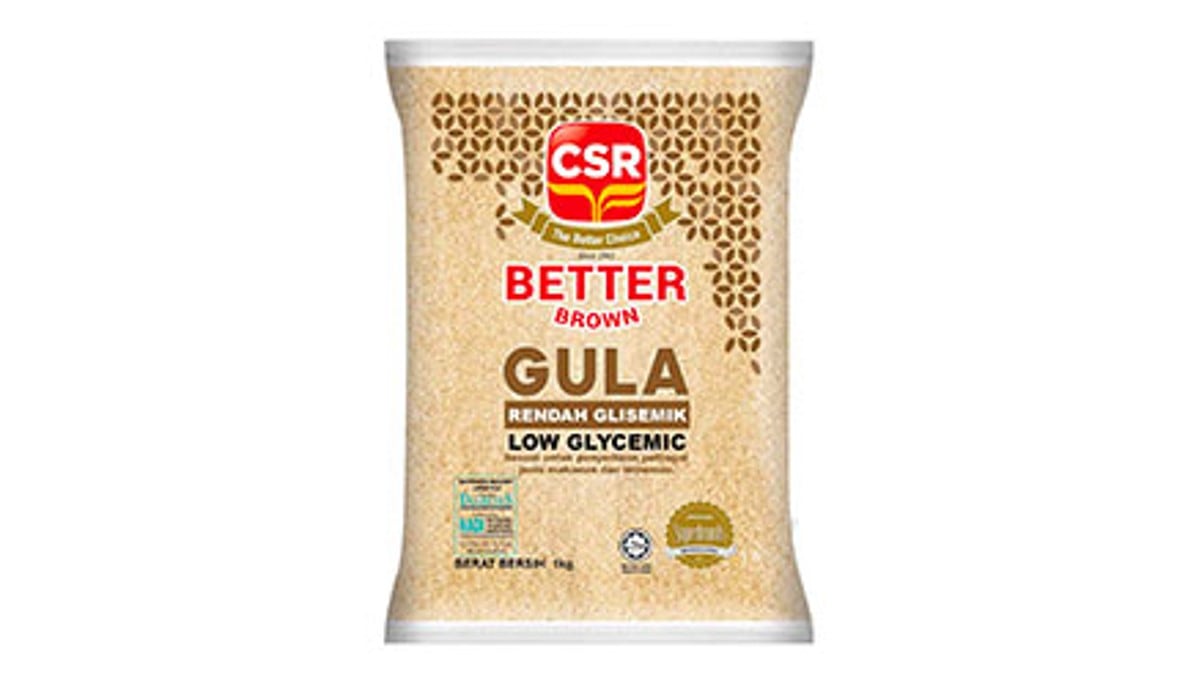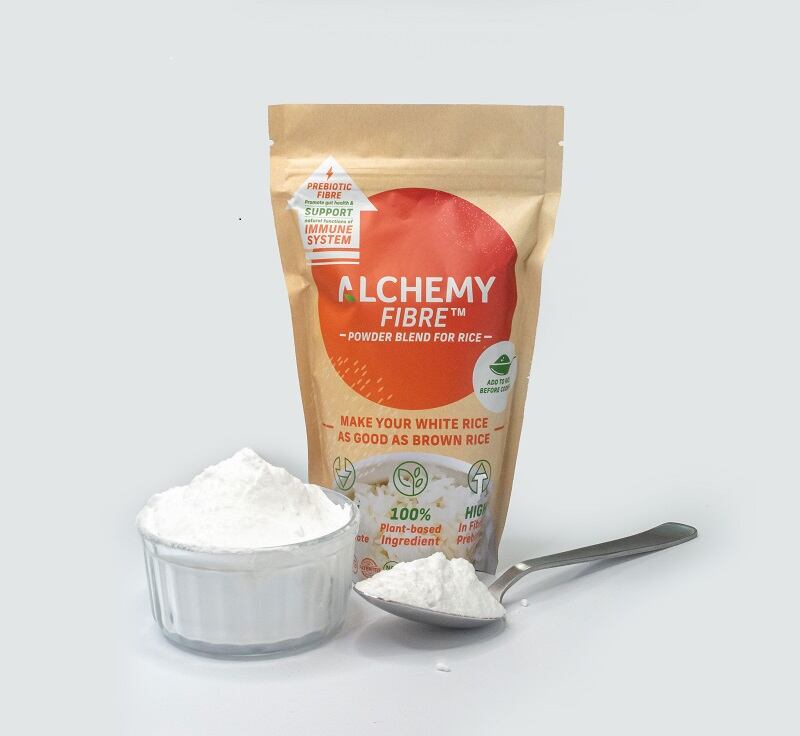The products are a mid-GI rice (GI = 62), a low-GI rice (GI = 55), and a rice cake. These products are also Cambodia’s first low to mid-GI products certified by GIF.
GIF is a not-for-profit health promotion charity aiming to help consumers make healthy food choices, through its front-of-pack low GI symbol. Apart from Australia, the symbol has been introduced in New Zealand, Canada, US, EU, Singapore, Malaysia, Japan, India and now Cambodia.
According to Yon Sovann, CEO of Bayon Cereal, who has been in the rice business for almost 30 years, he was introduced to the concept of low GI after attending the Healthy Ageing APAC Summit in 2018, organised by FoodNavigator-Asia and NutraIngredients- Asia.
Then CEO of the Glycemic Index Foundation, Dr Kathy Usic spoke about the global diabetes pandemic and how products such as low-GI foods can play a role.
GI is a measure of carbohydrate effect on post-meal blood glucose levels. Low GI foods (below 55) are slowly digested, absorbed and metabolised in the small intestine, producing a gradual rise in blood glucose levels, which is helpful for diabetes in improving their blood glucose management.
It also increases satiety and sustains energy, which is useful for weight management.
On the other hand, a high GI food (above 70) causes blood glucose levels to rise higher and longer.
Diabetes is a growing health issue in Cambodia, according to the International Diabetes Federation (IDF), there were more than 430,000 Cambodians diagnosed or 4.4% of its population as of this year.
It also does not help that Cambodia is a big rice-eating country, consuming rice up to three times a day for almost all meals, Sovann told us.
Rice up to the occasion
It was for these reasons that Sovann decided to work on achieving the GI symbol for its rice and rice-based products.
In less than three years, the company developed the Betamore brand (mid-GI), Senchey brand (low-GI) and the Betamore rice cake.
The Senchey brand uses a medium grain rice and a photoperiod sensitive variety while the Betamore is a long grain rice made from a non-photoperiod sensitive variety.
Photoperiod sensitive means the variety is sensitive to the length of day and night, and grows better if the day is longer. It takes a longer time to grow compared to non-photoperiod sensitive varieties.
The rice cake is made from the Betamore rice and is meant as a nutritional snack.
According to Sovann, the products are natural, and do not contain any additives. “It is the natural goodness carbohydrates for human metabolism.”
Both rice products are suitable for the Cambodian diet from making Hainan chicken rice, porridge, to fried rice. The products are grown and produced in Cambodia.
Sovann told FoodNavigator-Asia the products’ GI values were assessed at Singapore’s Temasek Polytechnic Glycemic Index Research Unit, after which the firm received the endorsement from GIF in February 2020.
Future of GI
The firm had planned to launch into the market soon after, but postponed plans due to the ongoing pandemic.
Dr Usic added that the COVID-19 pandemic alongside the global diabetes epidemic would affect more people living with diabetes or pre-diabetes as they are more vulnerable. She said low GI foods would help manage this global pandemic and help keep people well.
The company is now hoping to launch next year. Sovann plans to sell direct to consumers through its mobile application which is currently in production.
While the demand and awareness for low GI foods is growing globally, Sovann said the Cambodian population is still not knowledgeable on low GI foods.
He hopes that through the app, consumers will be educated on the benefits of low GI foods, avoid high GI foods, and make direct purchases on its app. The initial plan is to focus on the Cambodian market.




